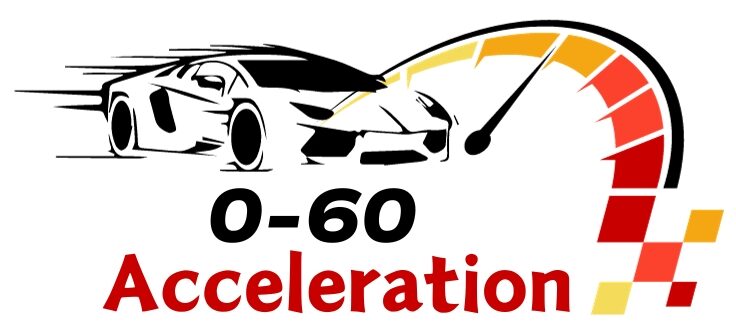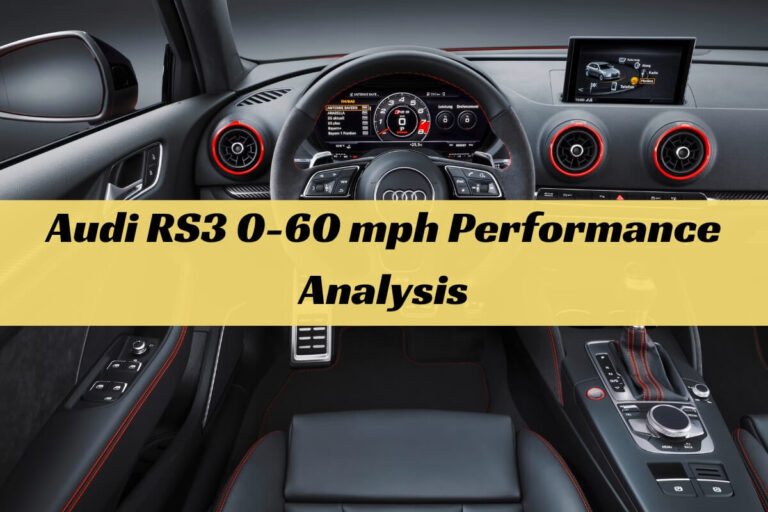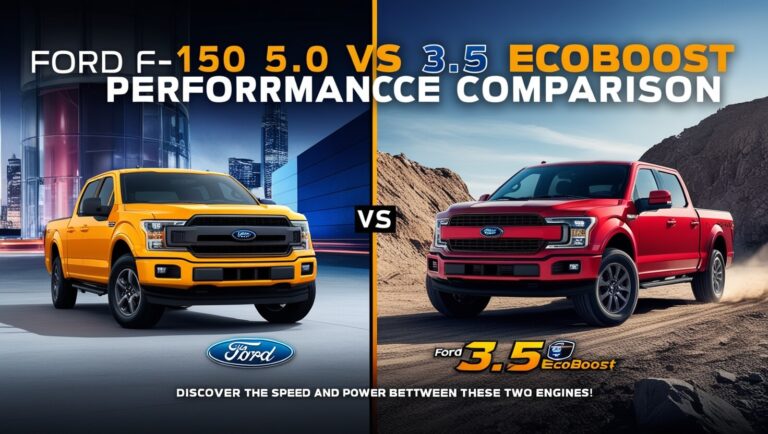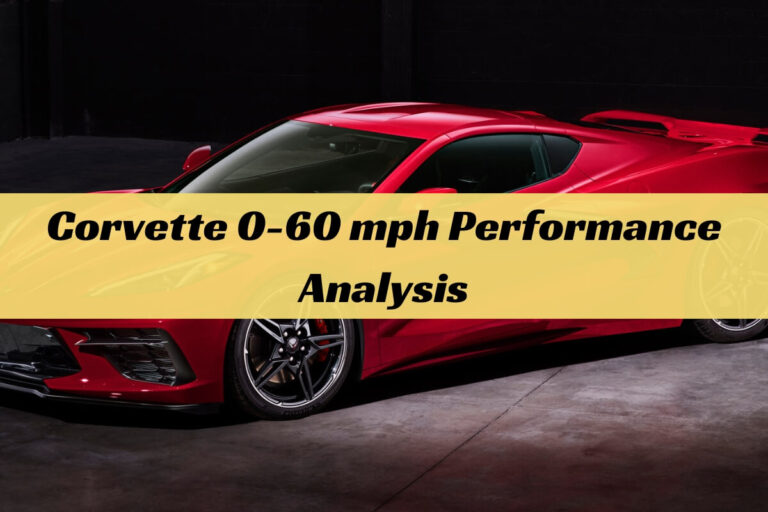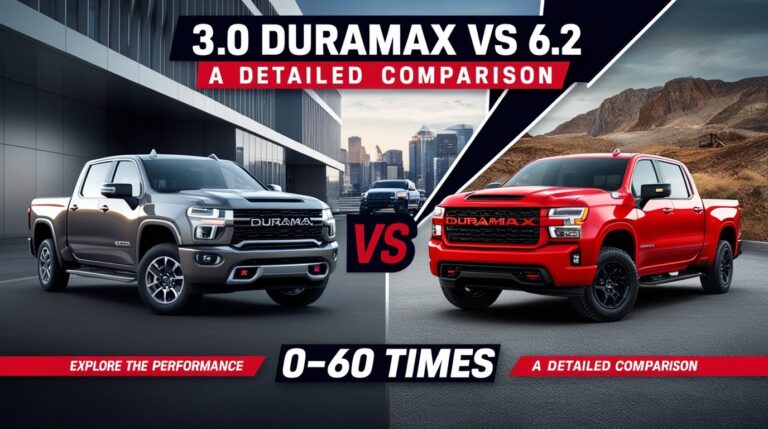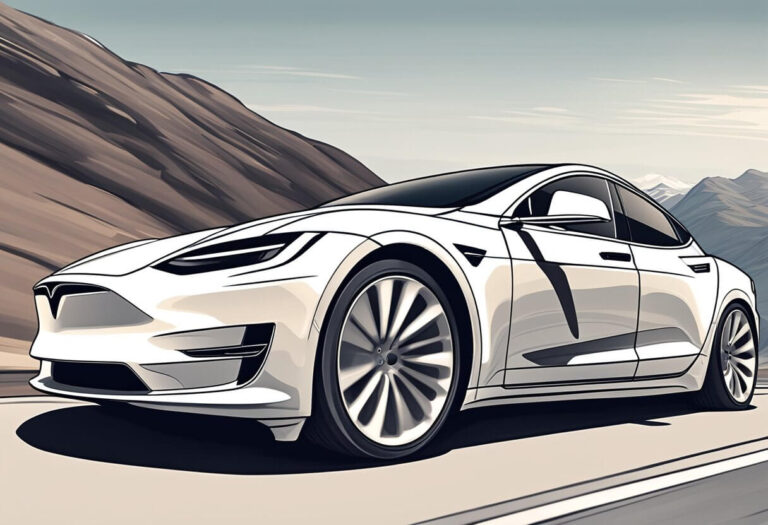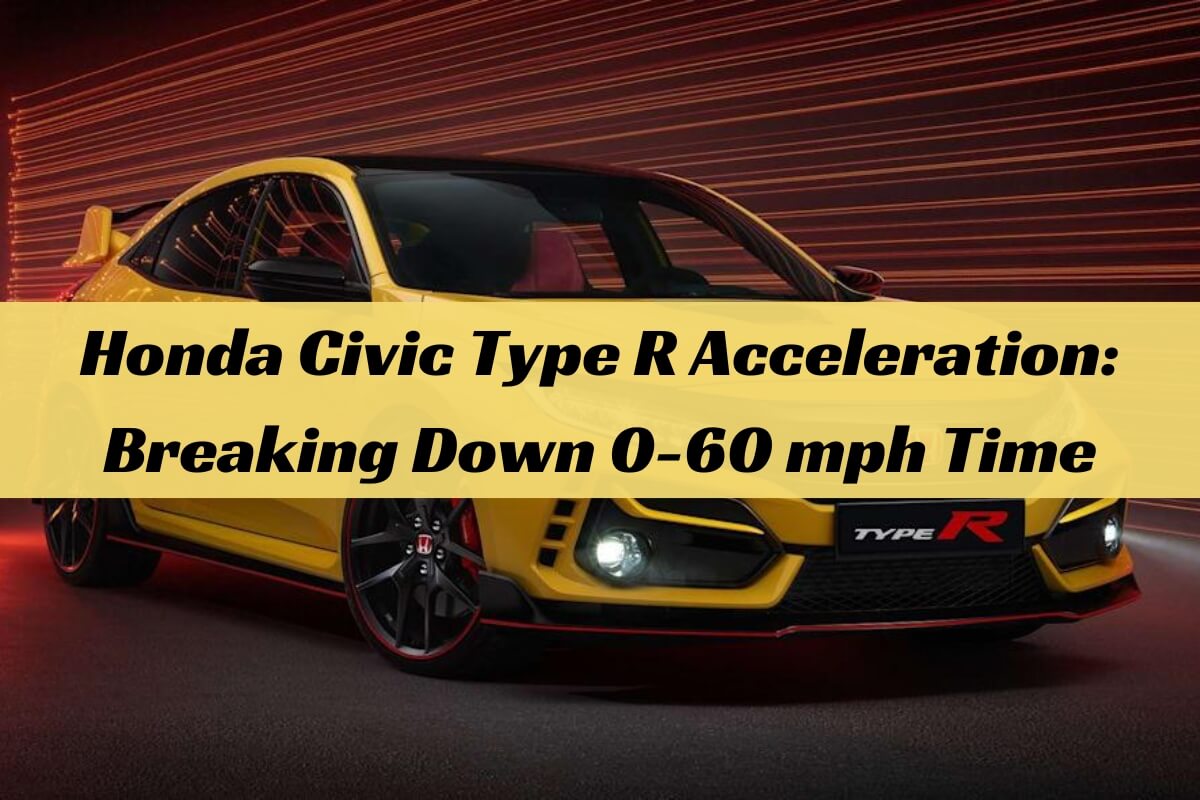
The Honda Civic Type R is a performance icon, known for its blistering acceleration and track-ready capabilities. One of the most commonly discussed metrics for any performance car is its 0-60 mph (0-96 km/h) time. This measurement reveals how quickly a vehicle can accelerate from a standstill to highway speeds.
For the Honda Civic Type R, the 0-60 mph time is an impressive showcase of its turbocharged engine, advanced drivetrain, and performance-focused engineering. In this article, we’ll dive deep into the Civic Type R’s 0-60 acceleration, explore the factors that contribute to its rapid performance, and help you understand if this metric should be a deciding factor in your next hot hatch purchase.
A Closer Look at the Honda Civic Type R’s 0-60 Time
The Honda Civic Type R’s 0-60 mph acceleration times have consistently impressed automotive journalists and enthusiasts alike. Here are the specific 0-60 mph and 0-100 km/h times for various model years:
2023 Honda Civic Type R:
- 0-60 mph: 4.9 – 5.79 seconds (depending on tests)
- 0-100 km/h: 5.4 seconds
2024 Honda Civic Type R:
- 0-60 mph: 5.3 seconds (estimated)
- 0-100 km/h: 5.4 seconds
2017-2021 Honda Civic Type R (FK8):
- 0-60 mph: 5.8 seconds
- 0-62 mph: 5.8 seconds
To put these numbers into perspective, the Civic Type R’s 0-60 mph times are on par with or better than many of its direct competitors, such as the Volkswagen Golf R (4.7 seconds) and the Hyundai Veloster N (5.6 seconds).
In addition to the 0-60 mph sprint, the Civic Type R also impresses with its quarter-mile times. The 2023 model can complete the quarter-mile in 13.5 to 13.9 seconds at 104.2 to 106 mph, showcasing its ability to maintain rapid acceleration beyond the initial 0-60 mph burst.
What Powers the Civic Type R’s Rapid Acceleration?
The secret to the Honda Civic Type R’s impressive acceleration lies in its finely-tuned performance components and advanced engineering. Under the hood, you’ll find a 2.0-liter turbocharged VTEC® engine that produces a potent 315 horsepower and 310 lb-ft of torque.
This powerplant is mated to a close-ratio 6-speed manual transmission with rev-matching capabilities, ensuring smooth and lightning-quick gear changes. The Civic Type R also features a limited-slip differential and a sophisticated traction control system, maximizing the transfer of power to the front wheels during hard acceleration.
Additionally, the Type R benefits from advanced performance technologies like launch control and a helical limited-slip differential. These features work together to optimize traction and grip, allowing the Civic Type R to put its power down efficiently and consistently achieve those eye-catching 0-60 mph times.
Pricing, Availability and Model Overview
If the Civic Type R’s acceleration performance has piqued your interest, you’ll want to know about its pricing and availability.
Trim Levels and Pricing
For the 2024 model year, the Honda Civic Type R has a starting MSRP of $44,795 (plus a $1,095 destination charge). This price point positions the Type R as a relatively affordable option among high-performance hot hatches, undercutting some of its premium European rivals.
It’s worth noting that used or certified pre-owned examples of older Civic Type R models can sometimes be found at more attractive prices, depending on the specific year, mileage, and condition.
Model Year Changes and Availability
The Honda Civic Type R is primarily available in North America, Europe, and select Asian markets. Its availability may vary depending on the specific region and year.
While the core performance capabilities of the Type R have remained consistent over the years, Honda has introduced various updates and enhancements with each new model year. These changes can range from minor cosmetic tweaks to more significant powertrain or chassis upgrades, ensuring that the Civic Type R stays at the forefront of hot hatch performance.
Putting the Pedal Down: Real-World Acceleration Tests
While manufacturer-claimed acceleration figures are informative, real-world testing provides a more comprehensive picture of a vehicle’s performance. Many respected automotive publications have put the Honda Civic Type R through its paces, allowing us to see how its 0-60 mph times translate to real-world driving experiences.
Professional Reviews Insights
Numerous professional reviews have praised the Civic Type R’s acceleration prowess. For instance, Car and Driver recorded a 0-60 mph time of 5.3 seconds for the 2023 model, remarking on the “explosive off-the-line acceleration” and the “linear power delivery” of the turbocharged engine.
Motor Trend’s test of the 2023 Civic Type R yielded a slightly quicker 0-60 mph time of 5.1 seconds, with the publication noting the “relentless surge of power” and the “impressive traction” provided by the front-wheel-drive system.
Beyond the raw numbers, reviewers have consistently commended the Civic Type R’s acceleration feel, highlighting the responsiveness of the throttle, the eagerness of the engine to rev, and the satisfying auditory experience provided by the sporty exhaust note.
Owner Perspectives
While professional reviews offer valuable insights, it’s also essential to consider the experiences of real-world owners. Online forums and owner reviews provide a wealth of information on the Civic Type R’s acceleration performance in daily driving conditions.
Many owners rave about the Type R’s ability to deliver exhilarating acceleration on demand, whether for merging onto highways or enjoying a spirited drive on backroads. However, some owners have noted that the front-wheel-drive layout can lead to occasional torque steer or traction issues during hard launches, especially in less-than-ideal weather conditions.
It’s worth mentioning that a small subset of owners have reported issues that could potentially impact acceleration performance, such as TPMS light problems, fuel pump issues, or overheating concerns. However, these reports seem to be relatively isolated and can often be addressed through proper maintenance or servicing.
Factors Impacting 0-60 Acceleration
While the Honda Civic Type R’s acceleration figures are impressive, it’s important to understand that various factors can influence real-world 0-60 mph times. Some of the key variables include:
- Tires: The Type R comes equipped with high-performance summer tires, which provide excellent grip and traction in dry conditions. However, worn or improperly inflated tires can significantly impact acceleration times.
- Weather and road conditions: Wet or slippery surfaces can reduce traction and increase wheel spin, potentially slowing down acceleration times. Similarly, extreme temperatures can affect engine performance and tire grip.
- Altitude and air density: Higher altitudes or changes in air density can impact engine power output, slightly affecting acceleration times.
- Driver inputs: Proper launch technique, including rev-matching and managing wheelspin, can make a substantial difference in achieving the quickest possible 0-60 mph times.
The Honda Civic Type R’s advanced performance technologies, such as its traction control system and limited-slip differential, are designed to help mitigate the impact of these variables. However, it’s essential to understand that real-world conditions may result in slight deviations from the manufacturer-claimed acceleration times.
Tuning and Mods to Optimize 0-60 Performance
For some enthusiasts, the stock acceleration performance of the Honda Civic Type R may not be enough. Fortunately, there is a thriving aftermarket scene offering various modifications and upgrades to help optimize the Type R’s 0-60 mph times further.
Some of the most popular modifications include:
- Intake and exhaust upgrades: Installing a high-flow intake system and a less-restrictive exhaust can improve airflow and help the turbocharged engine breathe more efficiently, potentially increasing power output and acceleration.
- ECU tuning: Reprogramming the Engine Control Unit (ECU) with custom tuning can unlock additional performance by adjusting parameters like boost pressure, ignition timing, and fuel mapping.
- Lightweight wheels and tires: Upgrading to lighter-weight wheels and stickier tires can reduce unsprung mass and improve traction, potentially shaving precious fractions of a second off the 0-60 mph time.
- Suspension upgrades: Installing coilovers or lowering springs can help lower the Civic Type R’s center of gravity, improving weight transfer and reducing squat during hard acceleration.
- Clutch and driveline upgrades: For more extreme modifications, upgrading the clutch and driveline components can help handle increased power levels without sacrificing reliability or drivability.
Modifications can boost the Civic Type R’s acceleration, but be cautious! Inexperienced tuning or pushing the engine too hard can cause reliability issues or component failure. Always work with reputable tuners and follow best practices for performance modifications.
Civic Type R 0-60 Pros and Cons
Like any performance vehicle, the Honda Civic Type R’s 0-60 mph acceleration prowess comes with its own set of pros and cons. Let’s explore some of the key advantages and potential drawbacks:
Pros:
- Blistering acceleration for the price: The Civic Type R delivers incredible straight-line performance at a relatively affordable price point, making it an attractive option for enthusiasts on a budget.
- Engagement and fun factor: The Type R’s manual transmission and rev-matching system, combined with its eager acceleration, create a highly engaging and rewarding driving experience.
- Daily drivability: Despite its performance capabilities, the Civic Type R remains a practical and comfortable daily driver, thanks to its hatchback body style and well-appointed interior.
Cons:
- Front-wheel drive traction limits: While the Type R’s traction control systems are impressive, the front-wheel-drive layout can still be a limiting factor during hard launches or in low-traction conditions.
- Loud cabin noise: Some owners have reported excessive road and tire noise entering the cabin, especially at highway speeds, which can become fatiguing on longer journeys.
- Short gearing for highway cruising: The Civic Type R’s close-ratio gearbox and aggressive gearing can make highway cruising a bit buzzy, requiring more frequent shifting or higher engine revs.
While these cons may be minor drawbacks for some enthusiasts, they are worth considering when evaluating the Civic Type R’s suitability for your specific driving needs and preferences.
How the Competition Stacks Up
To fully appreciate the Honda Civic Type R’s 0-60 mph acceleration performance, it’s helpful to compare it to its direct competitors in the hot hatch segment. Here’s a quick breakdown of how some of the Type R’s rivals stack up:
- Volkswagen Golf R: With a 0-60 mph time of 4.7 seconds, the all-wheel-drive Golf R holds a slight edge over the Civic Type R in straight-line acceleration. However, the Type R often outperforms the Golf R in other areas, such as handling and track performance.
- Hyundai Veloster N: The Veloster N’s 0-60 mph time of 5.6 seconds puts it slightly behind the Civic Type R, but it offers a more affordable entry point into the hot hatch segment.
- Toyota GR Corolla: As a close rival to the Civic Type R, the GR Corolla’s all-wheel-drive system and 0-60 mph time of around 5 seconds make it a formidable competitor in terms of acceleration and overall performance.
- Subaru WRX: While not a direct hot hatch competitor, the Subaru WRX’s 0-60 mph time of around 5.4 seconds (for the latest generation) puts it in the same ballpark as the Civic Type R, albeit with a different body style and driving experience.
Acceleration times are just one part of the story. Handling, steering feel, and driving dynamics also matter when it comes to a hot hatch’s performance.
Is the Type R’s 0-60 Time a Deal Maker or Breaker?
With its impressive 0-60 mph acceleration times, the Honda Civic Type R certainly appeals to enthusiasts who prioritize straight-line performance. However, it’s essential to consider whether this metric should be the primary deciding factor when choosing a hot hatch.
For those who primarily plan to enjoy the Civic Type R on winding backroads or at track days, the 0-60 mph time may not be as critical as other factors like handling, braking, and overall agility. The Type R’s well-tuned suspension, precise steering, and capable brakes make it a formidable performer in these scenarios, regardless of its blistering acceleration.
On the other hand, if your primary use case involves frequent highway merging or the occasional drag strip visit, the Civic Type R’s rapid 0-60 mph time could be a significant selling point. The ability to quickly and effortlessly accelerate to highway speeds can be a valuable asset in these situations.
Ultimately, the decision to prioritize the Civic Type R’s 0-60 mph acceleration will depend on your specific driving preferences and needs. If straight-line performance is a top priority, the Type R delivers in spades. However, if you value a more well-rounded performance package, you may want to consider the Type R’s other capabilities as well.
Maintaining Peak 0-60 Performance
Like any high-performance vehicle, the Honda Civic Type R requires proper maintenance to ensure its acceleration capabilities remain at their peak. Neglecting routine service or ignoring potential issues can lead to a gradual decline in performance, including slower 0-60 mph times.
Here are some common issues that can impact the Civic Type R’s acceleration performance and the recommended solutions:
- Tire wear and degradation: The Type R’s high-performance tires can wear down quickly, especially if the vehicle is driven aggressively or on the track. Replacing worn tires with fresh, high-quality rubber is essential for maintaining optimal traction and acceleration.
- Spark plug fouling: Over time, spark plugs can become fouled or worn, leading to misfires and a loss of power. Replacing the spark plugs according to the recommended maintenance schedule can help ensure consistent acceleration.
- Air filter clogging: A clogged air filter can restrict airflow to the engine, reducing power output and potentially affecting acceleration times. Regular air filter replacements are crucial for maintaining peak performance.
- Fuel system issues: Problems with the fuel pump, injectors, or other fuel system components can impact the engine’s ability to generate maximum power, ultimately affecting acceleration. Addressing any fuel system issues promptly is recommended.
Honda recommends following a specific maintenance schedule for the Civic Type R, with service intervals ranging from 7,500 miles to 120,000 miles, depending on the type of maintenance required. Adhering to this schedule and addressing any potential issues promptly can help ensure that the Type R’s acceleration remains as impressive as the day it left the factory.
FAQs on Civic Type R Acceleration
To wrap up our comprehensive exploration of the Honda Civic Type R’s 0-60 mph acceleration, let’s address some frequently asked questions:
What is the top speed of the Honda Civic Type R?
The 2023 Honda Civic Type R has a top speed of 170 mph (273 km/h), while the 2024 model is claimed to have a top speed of 275 km/h (171 mph).
How does the Civic Type R’s 0-60 mph time compare to other performance cars in its price range?
The Civic Type R’s 0-60 mph time is impressive for its relatively affordable price point, outperforming many premium hot hatches and sports cars that cost significantly more.
Can modifications like ECU tuning or intake/exhaust upgrades improve the 0-60 mph time?
Yes, many enthusiasts have reported noticeable improvements in acceleration times after installing performance modifications like ECU tuning, intake systems, and exhaust upgrades. However, it’s crucial to work with reputable tuners and follow best practices to avoid reliability issues.
Is the Civic Type R’s front-wheel-drive layout a significant disadvantage for acceleration?
While an all-wheel-drive system can provide better traction during hard launches, the Civic Type R’s advanced traction control systems and limited-slip differential help mitigate the potential drawbacks of its front-wheel-drive layout. However, in low-traction conditions or during aggressive driving, the front-wheel-drive setup may still present some limitations.
Final Thoughts
The Honda Civic Type R’s impressive 0-60 mph acceleration times are a testament to the automaker’s commitment to performance and engineering excellence. With its potent turbocharged engine, advanced drivetrain components, and cutting-edge performance technologies, the Type R delivers breathtaking straight-line acceleration that rivals far more expensive sports cars.
However, the Civic Type R is more than just a one-trick pony. Its well-rounded performance capabilities, including precise handling, strong braking, and a practical hatchback body style, make it a compelling choice for enthusiasts seeking a true driver’s car that can also serve as a daily companion.
While the 0-60 mph acceleration metric is undoubtedly a standout feature of the Civic Type R, it’s important to consider your specific driving needs and preferences when deciding whether this metric should be the primary deciding factor. If straight-line performance is your top priority, the Type R delivers in spades. However, if you value a more well-rounded performance package, you’ll be pleased to know that the Type R excels in various other areas as well.
Regardless of your priorities, one thing is certain: the Honda Civic Type R’s 0-60 mph acceleration times are a testament to the relentless pursuit of performance and the unwavering commitment to delivering an exhilarating driving experience that few other hot hatches can match.
